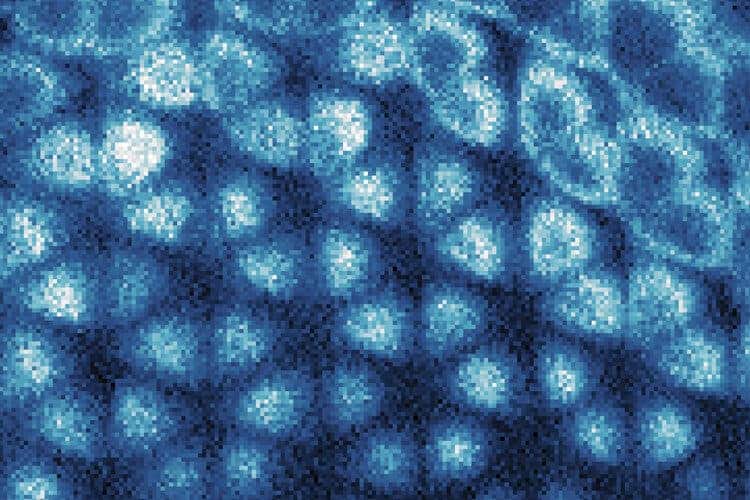In everyday life, the electrons that comprise a fluid, such as air or water, chaotically zip through the matter. But more than 90 years ago, acclaimed physicist Eugene Wigner mathematically predicted that at very low temperature and density, the movement of electrons would grind to a halt, freezing into place to form what he dubbed ‘electron ice.’
While scientists had previously obtained indirect evidence that electron ice exists, no one had been able to image it — until now.

The butterfly wing-like pattern seen above is the first-ever picture of a so-called ‘Wigner crystal’, which was sandwiched between two very thin semiconductor layers, as seen through the ‘eye’ of a scanning tunneling microscope (STM). The space between the individual electrons you can see in the picture is just around 100 times greater than the separation of atoms in the semiconductor sheets.
The breakthrough was achieved by researchers at the University of California Berkeley, Cornell University, Arizona State University, and the National Institute for Materials Science in Tsukuba, Japan — but this was no easy task.
In order to coax free-flowing electrons to form electron ice, the physicists placed single-atom layers of tungsten disulfide and tungsten diselenide — two very similar semiconductors — very close to each other. An electric field was applied to lower the density of electrons between the two layers, so other electrons don’t cause disturbances. Finally, the entire setup was chilled to about 5 degrees Kelvin, which is close to absolute zero. When the temperature is this low, the motion of electrons almost stops, keeping them neatly in place for a nice family photo.
The final challenge was imaging the crystal, which “melted” whenever the scientists turned on the STM. A workaround was found: covering the entire experimental device with a graphene sheet, which acts like a photo paper that records the location of each individual electron.
When the STM was turned on this time, the graphene sheet was etched with the location of perfectly ordered electrons, neatly arranged in a honeycomb-shaped grid, a structure typical of crystals. It’s an indirect measurement, but one that proves without a doubt that Wigner crystals exist.
The orderly structure is owed to the electrostatic repulsive forces between the negatively charged electrons and the fact that the particles’ kinetic energy is lower than their repulsive energy. Physicists call this a system of powerfully correlated electrons.
The findings appeared in the journal Nature.





